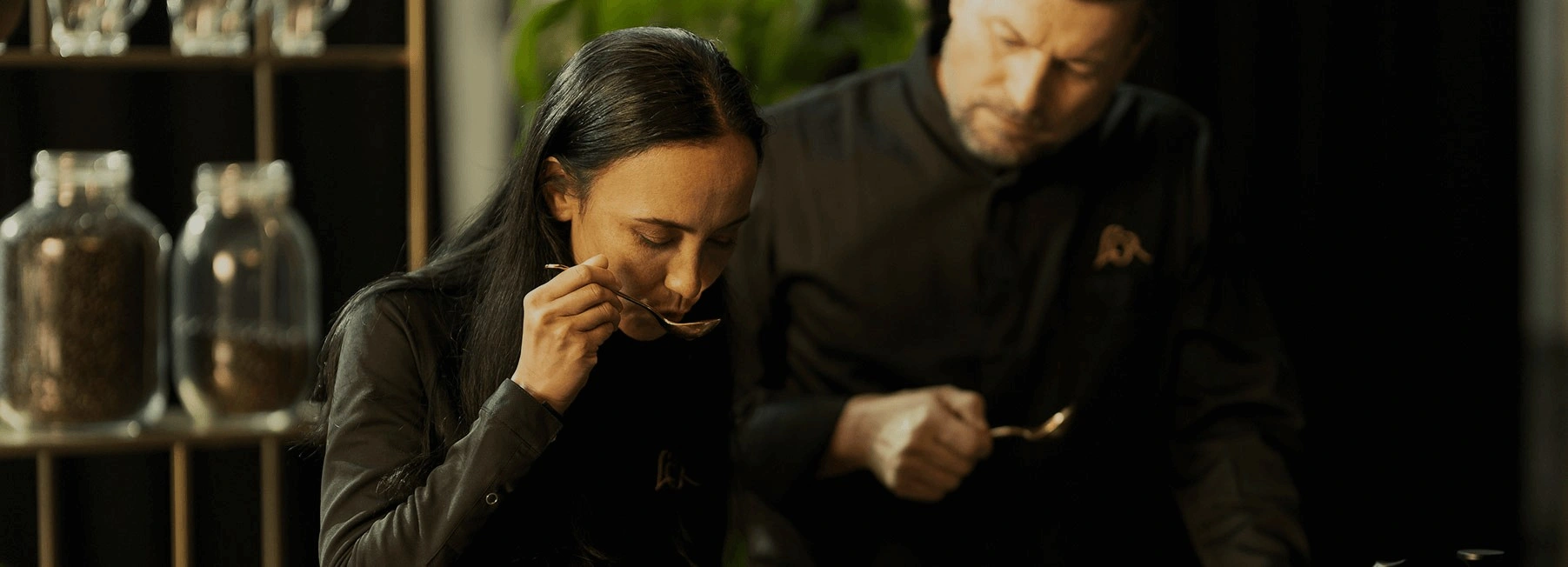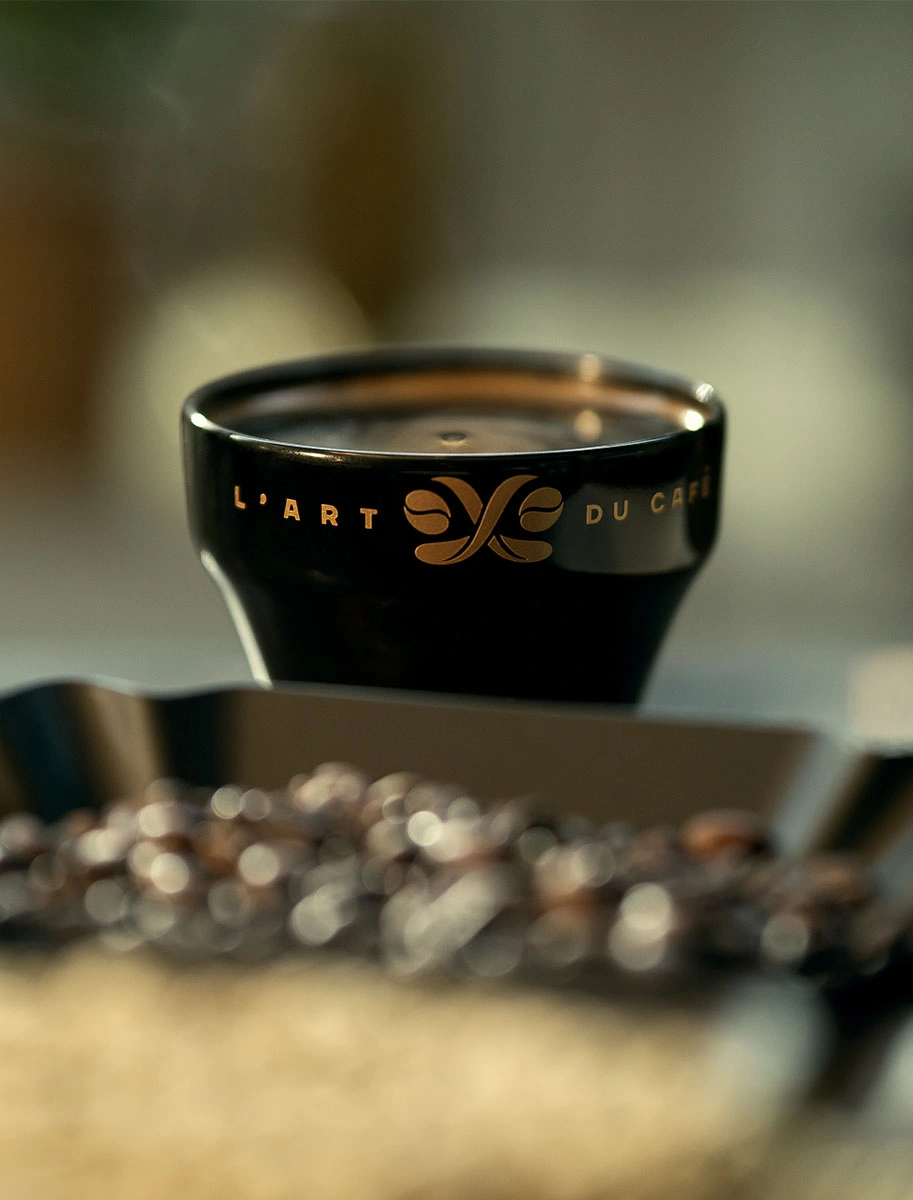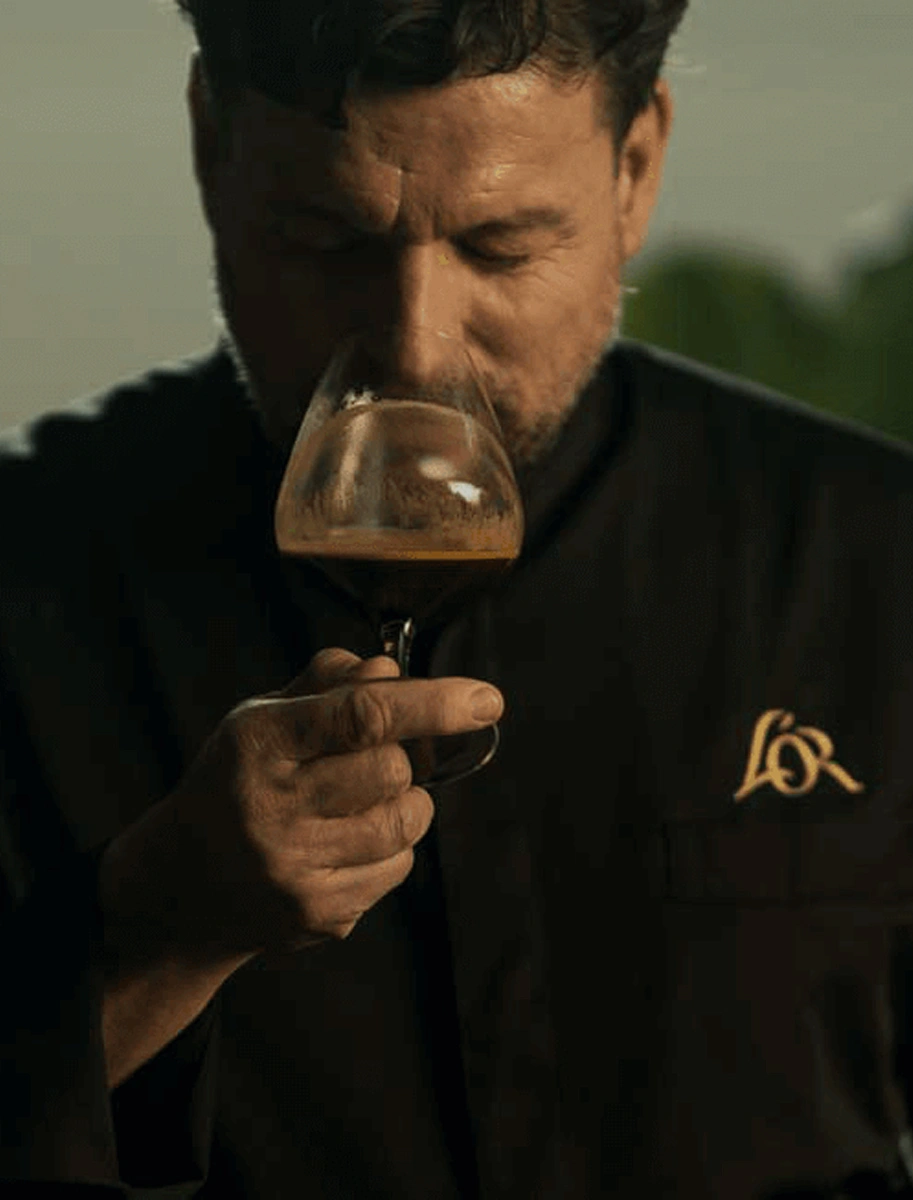Tasting


Coffee tasting is the practice of identifying unique coffee tastes and aromas in the coffee you drink. L'OR blends are specially developed to make all the senses work through different layers of flavors and aromas. That's why we encourage you to explore our world of flavours.
The taste of a coffee and the tasting experience are influenced by its origin, the degree of roasting, the way it is brewed, as well as what is added to it. Each of our blends has its own unique taste profile and flavors. In order to optimize your experience, we provide you with a guide with explanations on how to best enjoy the blend of your choice.
1
The aromas of your coffee are the result of a combination of almost 2000 different components
2
For coffee experts, good coffee is usually full-bodied, balanced, velvety, and intense.
3
Store your coffee in an airtight container in a cool, dry place
Coffee storage and preparation
To best preserve the richness of the aroma of L'OR coffee, store it in an airtight container stored in a cool, dry place. This applies to whole coffee beans as well as ground coffee and instant coffee.
Our coffees are also packaged in foil capsules, which allows us to "capture" the freshness of the ground coffee and keep it longer. In other words, it allows you to enjoy fresh, flavorful coffee, cup after cup.
- Roland Brouwer, expert L'OR du café
The easiest way to brew coffee with ground coffee or freshly ground beans is to use a coffee maker. It will quickly release the aromas of the coffee in order to enjoy the best quality coffee. Plus, it allows you to brew larger batches of coffee for endless caffeinated enjoyment.

Coffee Tips: For the Optimal Experience
When you enjoy coffee, every experience is unique. The way you choose to brew your coffee is often a reflection of your personality. From fast and intense espresso to creamy cappuccino. Sweet or unsweetened. Normal or oat milk. It's up to you.
If you prefer a sweeter coffee, we recommend using white sugar rather than brown sugar in your L'OR coffee. Brown sugar has a more caramelized taste that can influence the taste profile of the coffee and thus you won't enjoy the best characteristics of the blend.
Our coffee experts also recommend that you use cups made of stoneware, earthenware or porcelain rather than glass or metal, as this allows for better aroma development.
If you want to take your tasting moment even further, you can preheat your cup before pouring the coffee into it.

Olfactory aspect of the tasting
If you want to enjoy the flavor palette of your cup of L'OR coffee, it's best to do so immediately after making it because the subtlest aromas are the most volatile and can change or disappear over time.
Brew the coffee, then pour it directly into your cup. Inhale deeply two or three times, with your nose just above your cup, to get a feel for the aromas.
Did you know?
To become a coffee expert, the most important sense is smell. In fact, your nose perceives 80% of the aromas. The aromas of your coffee are the result of a combination of almost 2000 different components.
Coffee experts have managed to identify around 800 of them, which means that many mysteries remain. This also explains why it has never been possible to reproduce the smell of coffee.
Before you learn how to pick up the different aromas of our L'OR coffee, it's important that you understand the different types of coffee smells. Let's discover them together.
Coffee Flavor Categories.
1
Enzymatic: Since the coffee bean is actually the seed of a fruit, similar to a cherry, many coffees contain a floral or rather fruity aroma. These aromas are described as enzymatic properties and are very varied, ranging from berry to citrus to onion and melon.
2
Sugar infusion: When exposed to heat during the roasting stage, the fragrance released by amino acids and sugars can be reminiscent of roasted nuts or even cocoa. Depending on the coffee bean, different levels of sugar will influence these flavor nuances in the final cup of coffee.
3
Dry distillation: During coffee roasting, parts of the coffee bean are "burned" in the roaster. This gives rise to unique and distinctive aromas, similar to those of wood or pipe tobacco. The higher the degree of roasting, the more pronounced the tastes of dry distillation.
Tasting on the palate
Before tasting your coffee, shake the cup well to make it even. Some aromatic nuances can be masked by coffee that is too hot or too bitter, so be sure to let it cool for a while before enjoying it.
For a pure tasting experience, try not to eat spicy food before drinking your coffee. Certain aromas such as anise, mint and liquorice have an influence on the taste of coffee.
Take small sips so as not to saturate your palate. Stir the coffee in your mouth for 5 to 10 seconds before swallowing it to allow each part of your tongue and palate to detect the intensity of the different aromas.
Continue tasting once the coffee has cooled, as this will allow you to detect aromas that the heat may have initially masked. But don't wait more than 10 to 15 minutes.

A multitude of aromas
When you enjoy your coffee, if you concentrate well, you can identify familiar notes, including acidity, bitterness, or creaminess. Some coffees also reveal spicy or floral notes as well as notes of red or dried fruits. When tasting, you can recognise a good coffee by its generally full-bodied, balanced, velvety and intense taste. The idea is that it doesn't taste burnt, aggressive, bitter or grainy.
Our experts taste each L'OR blend without milk or sugar, so you can fully enjoy the tasting experience and detect every nuance of the taste profile. Milk and sugar can reduce the intensity of certain aromas, such as the bitterness of a coffee.
I want to subscribe to the newsletter
Take advantage of a 30% discount* on your next order
